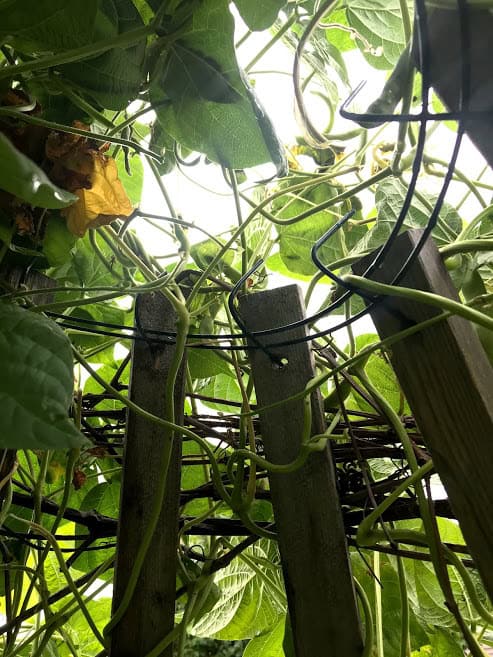How To Grow Green Beans
Green beans have always been a staple in my garden. So I thought I would share some of the lessons I have learned, the successes and setbacks I have experienced over the years of growing this favorite summer treat!
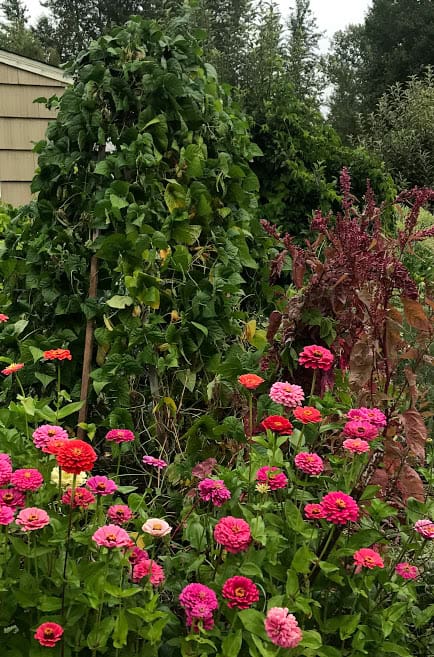
Picking the right variety for the garden
Browsing seed catalogs and picking out seed is one of my favorite garden tasks in the year. The only hard part is narrowing down what varieties to pick! With so many choices, knowing your garden goals will help to make the decision a little easier. The main factors I consider when picking out beans are:
1. Pole vs. Bush
Pole beans of course will require some sort of trellis for support. If you are short on square footage, pole varieties are a great choice as they utilize vertical garden space.
Bush varieties are low growing, self supported plants. They do take up more ground space but are easily tucked into areas where a trellis might be inconvenient. They are a great choice if you are growing a garden for a small family or simply don’t want to build a structure for your beans. And let’s face it, there are years you need the simplicity of just shoving the seed into the ground!
I often choose a bush variety along with a pole variety to fill in the edges of the garden bed around the trellis.
2. Taste & Visual Appeal
This year I acquired some free bean seed from a seed exchange. I typically like seed exchanges because I can try out varieties that I wouldn’t necessarily pick out myself. That being said, when reading through seed catalog descriptions you might notice the term “stringless”. I have often seen this term without giving it much attention, until this year… my pole beans are so STRINGY! From now on I will pay more attention to this little detail and choose “stringless” varieties.
A note on Purple Beans: years ago I grew purple beans. I was really looking forward to the array of color on my dinner table. Only, I discovered that the purple color fades when cooked, a MAJOR disappointment!!! They are still beautiful on the vine and in your harvest basket but for the sake of simplicity I usually only grow green and yellow varieties to satisfy my eye.
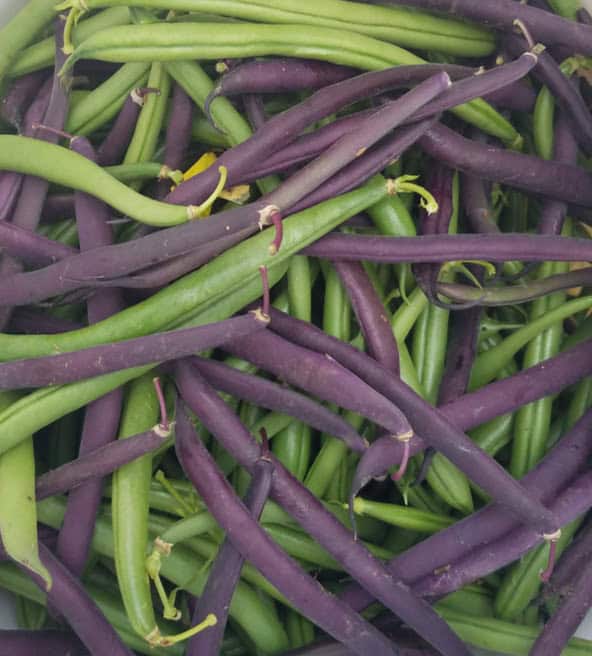
Trellising
I have grown beans on various trellis structures but my favorite by far has been the tepee.
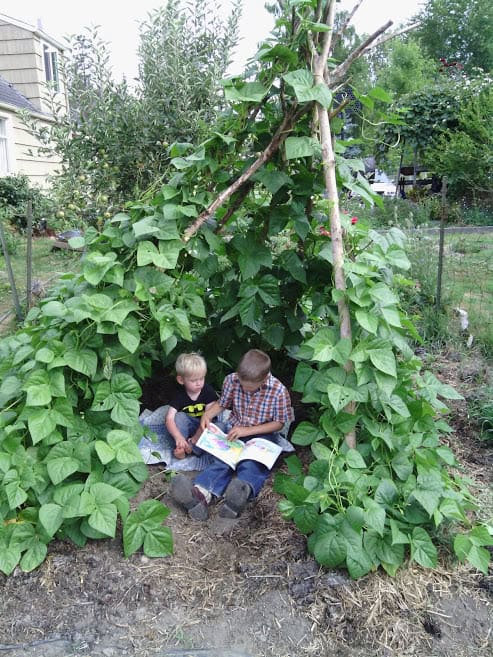
The tepee design makes the garden fun and kid friendly. My boys enjoy spending time playing and reading in the tepee while I work in the garden.
This year I assembled my tepee by up-cycling a wreath frame. I drilled a hole in the top of 1×2 poles to insert the prongs through.

Also this year I tried my hand at the 3 sisters garden. The 3 sisters garden is where you grow squash, corn, and beans together. The corn is planted first and when it grows to 6 inches high you plant a few beans around the corn. As they grow together the corn stalk becomes the trellis for the beans. So far I am very pleased with the results.

Harvesting
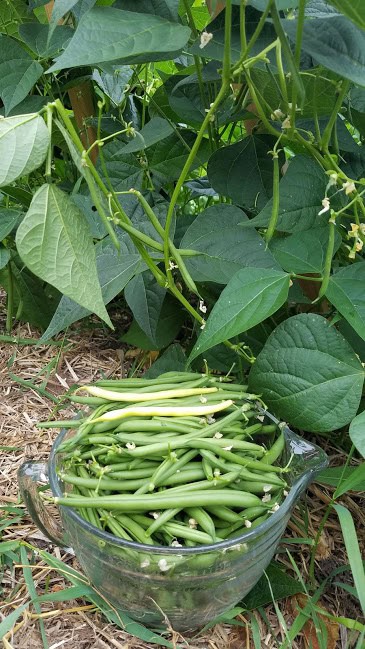
I try to keep an eye on my beans, checking them every couple days. But inevitably there always seems to be that busy week in late August when the beans get out of hand.
So how do you know when they are ready or overdone?
First, I look for nice straight beans that aren’t overly lumpy. The lumps indicate that the bean seed is starting to form inside and the more mature the bean seeds the less edible it will be.
When in doubt, I crack open a couple to see how mature the seed is. If you like the taste of raw beans you can sample a few. When they start to taste mealy and dry they are overdone and no longer suitable as green beans for dinner.
On the left is a bean with a maturing seed. On the right is a bean that the seed has not yet started to form.

You can start harvesting beans as soon as they are big enough to pick from the vine. I sometimes pick them at the earliest stage, as tiny beans make a wonderful addition my more delicate gourmet dishes.
Once they become too big to eat, I leave them to dry out and be shelled later on.
Eating Green Beans
My all time favorite way to prepare and eat greens beans is:
1. Snip off the tops (I find scissors to be the best tool for snipping).
2.Throw them on baking sheet with beef tallow or avocado oil, garlic, and salt.
3.Bake them at 400 degrees until the edges are browned.

Yum!!!
And that’s it! One of the easiest and most rewarding vegetables to grow in your garden!
Now all you have to do is convince your kids that eating their green beans is just as fun as reading under the green beans…

